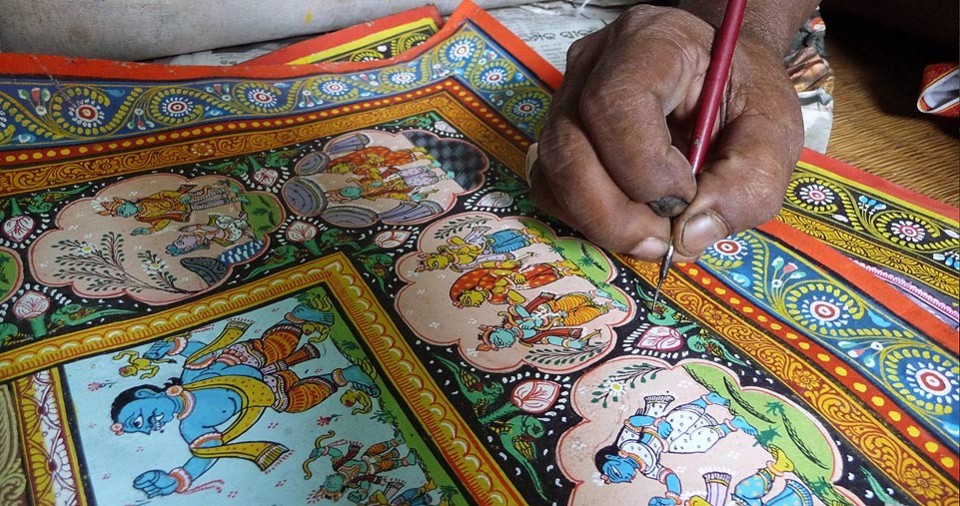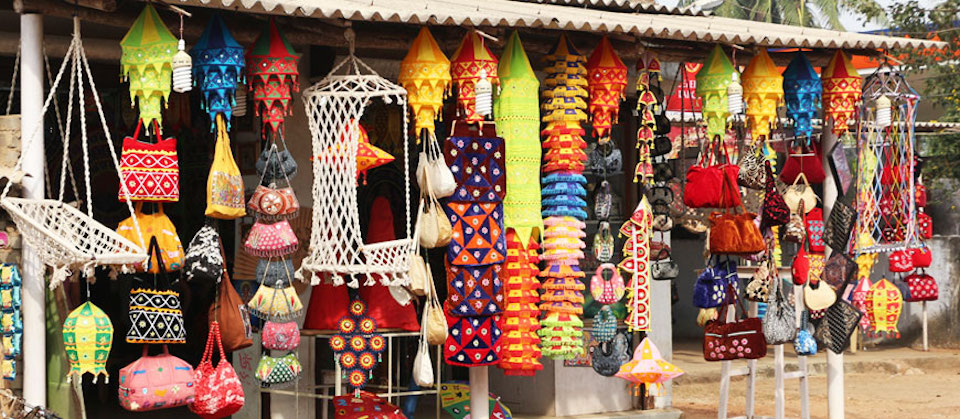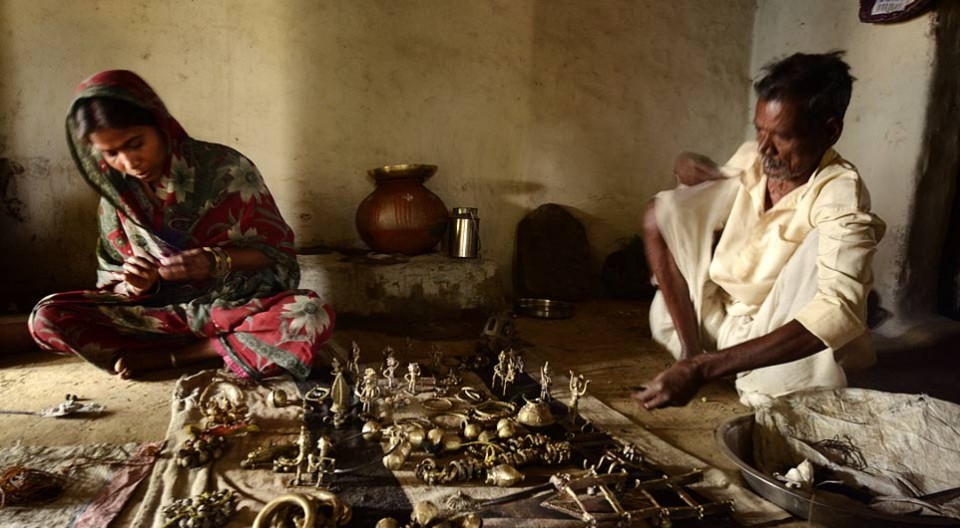Once upon a time, the Indian state of Odisha was known as Utkala – a land excelling in arts. The name would still be apt for the state. Dating back to historic times, Odisha’s rich legacy of art is alive in some of its tiny villages even today. With artists and their artworks greeting you at every corner, these art villages are like open-air galleries. You can not only appreciate artists skillfully practicing their art but also shop directly in their rusty little workshops instead of overpaying for them in a fancy gallery. While bargaining is the norm, do remember that these artists put their heart and soul into their craft and making sure our culture and art lives on.
Pattachitra, Tala Patra Chitra and Papier Mache Masks at Raghurajpur

© gaatha.com
Picturesquely placed along the shores of Bhargavi River, nearly each of the 100 households at Raghurajpur near Puri (14km), is an art studio itself. Artists here are renowned for their intricate Pattachitra and Tala Patra Chitra paintings depicting religious and folk tales and scenes from tribal life. While Tala Patra Chitra are paintings engraved on leaves, Patachitra is usually painted on a piece of cloth. Now-a-days, artists are painting Patachitra on a wide range of items including pottery, wood, and wooden toys. Besides these two painting forms, you’ll also find typical Odiya masks made from a mixture of papier mache, waste cloth, clay and bio-wastes here. To promote, encourage and revive Odisha’s unique art forms, the Indian National Trust for Art and Cultural Heritage (INTACH) has developed Raghurajpur as a heritage art village.
Appliqué at Pipli



© indianholiday.com
Across handicraft stores in India, you’ll find a range of brightly colored appliqué and patchwork items. Most of these vibrant appliqué products are made at Pipli, a little village located midway between Puri (26km) and Bhubaneshwar (36km). Dating back to the 10th century, this village was established for artists specialized in appliqué artwork to make patchwork umbrellas and canopies for the famed Jagannath Temple Rath Yatra held annually at Puri. Till date, the appliqué umbrellas, or chandua as it is locally known, are used to adorn the giant chariots of the Rath Yatra. Today, these craftsmen use their art to make a diverse range of appliqué products like pillow and covers, bedsheets, lampshades, lanterns, wall hangings, bags and purses, puppets, table cloths, and of course decorative umbrellas.
Dhokra at Nabajibanpur and Sadeiberin



© gaatha.com
Over 4,500 years ago, the Harappan Civilization for the first time introduced the art of dhokra or metal casting. When the civilization collapsed, their metal casting techniques were lost too. But this ancient art continues to thrive in the villages of Nabajibanpur and Sadeiberini in Odisha’s Dhenkanal district (about 70km from Bhubaneshwar). Almost every family in these villages is engaged in the art of dhokra.
Involving a rather long process, artists first make clay models / casts which are covered by a layer of wax. The wax is then shaped and carved to have the finer details of the main design. This clay and wax model then gets another covering of clay which takes the negative form of the wax on the inside, essentially becoming a mould. Each model has holes at its bottom. These models are then placed in a hot oven. The oven’s heat melts the wax, which drains out through the holes at the bottom of the model. The wax is then replaced with molten brass. Once the liquid metal is cooled, it takes the shape of the wax mould. The outer layer of the clay is broken and what is left is the final metal product. The artists here use this age-old technique to make sculptures of gods, goddesses, animals, figurines, jewelry, vases, lampshades, door handles and much more.










